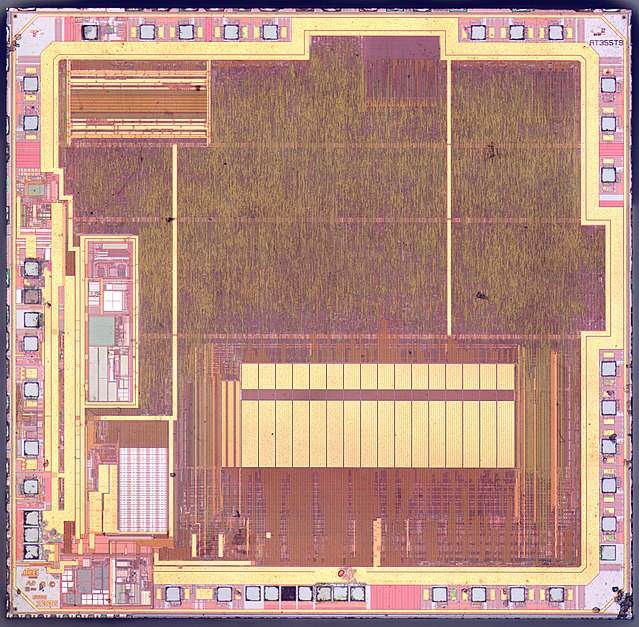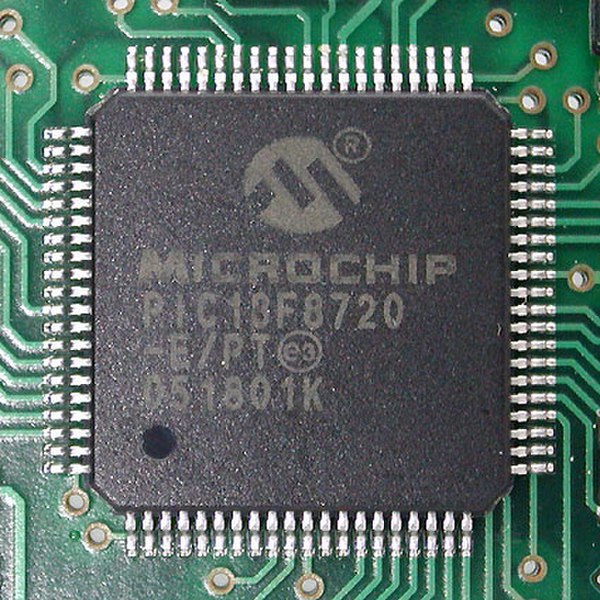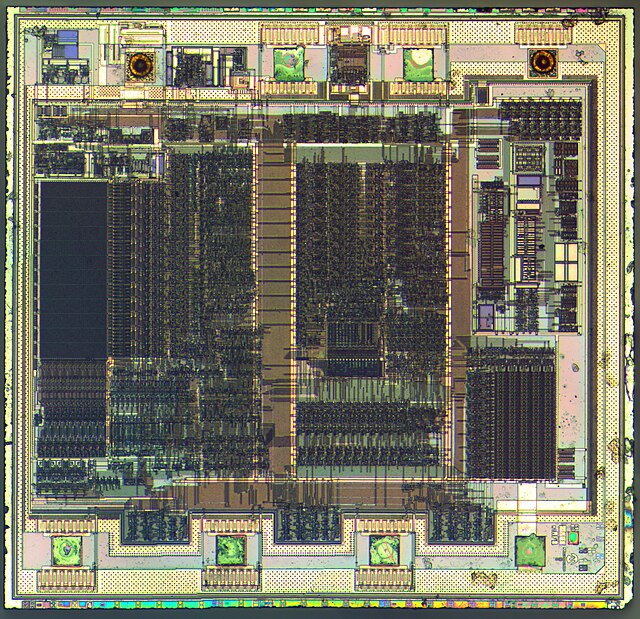EEPROM or E2PROM (electrically erasable programmable read-only memory) is a type of non-volatile memory. It is used in computers, usually integrated in microcontrollers such as smart cards and remote keyless systems, or as a separate chip device, to store relatively small amounts of data by allowing individual bytes to be erased and reprogrammed.
STMicro M24C02 I²C serial type EEPROM
Atmel AT93C46A die
AT90USB162 MCU integrates 512 Byte EEPROM
Inside of a SIM card
A microcontroller or microcontroller unit (MCU) is a small computer on a single integrated circuit. A microcontroller contains one or more CPUs along with memory and programmable input/output peripherals. Program memory in the form of NOR flash, OTP ROM or ferroelectric RAM is also often included on chip, as well as a small amount of RAM. Microcontrollers are designed for embedded applications, in contrast to the microprocessors used in personal computers or other general purpose applications consisting of various discrete chips.
The die from an Intel 8742, an 8-bit microcontroller that includes a CPU running at 12 MHz, 128 bytes of RAM, 2048 bytes of EPROM, and I/O in the same chip
Two ATmega microcontrollers
A PIC 18F8720 microcontroller in an 80-pin TQFP package
Die of a PIC12C508 8-bit, fully static, EEPROM/EPROM/ROM-based CMOS microcontroller manufactured by Microchip Technology using a 1200 nanometer process








